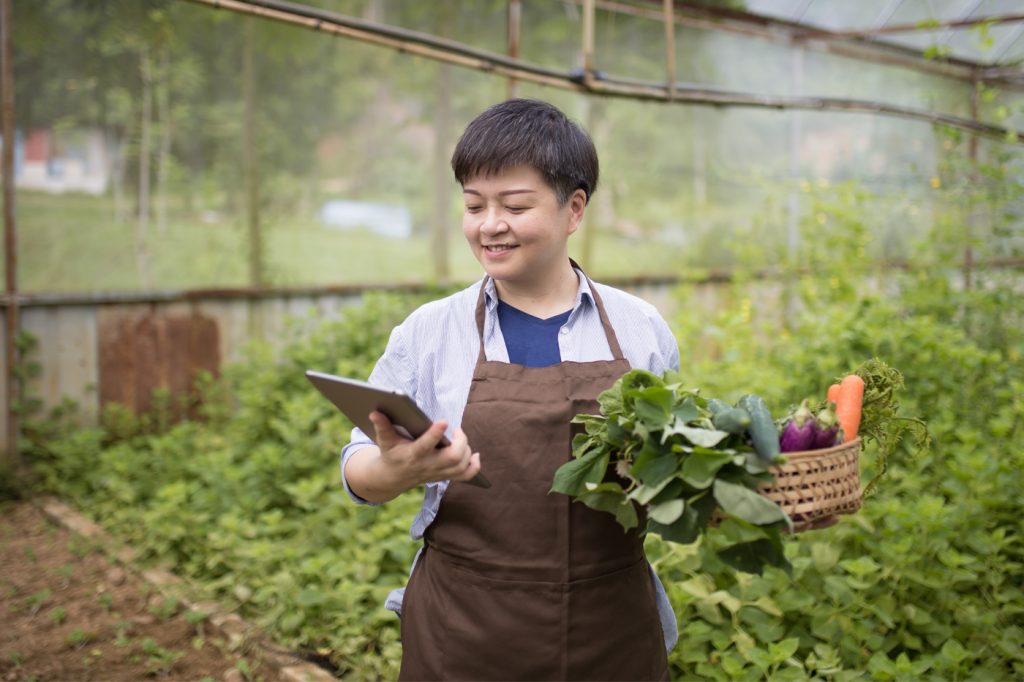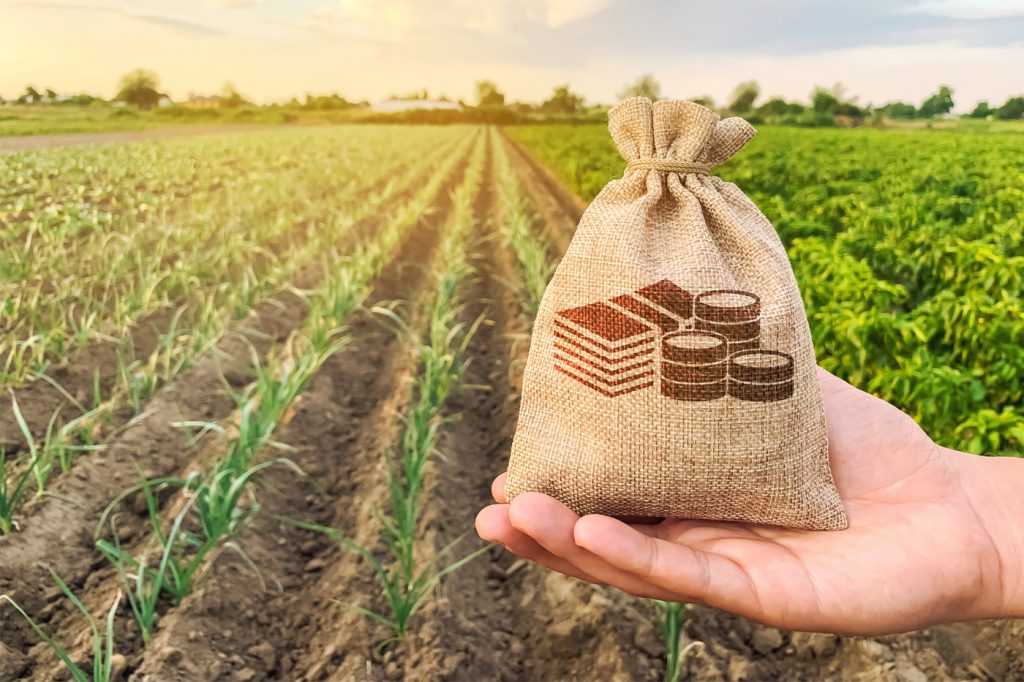Food Financing: Why Credit in the Hands of Farmers Uplifts Us All
Banking’s role in bridging the food-insecurity gap.

By Dr Amanda Salter
Hunger is now officially a weapon of war, on par with money laundering and terrorism financing.
The World Food Programme, awarded the 2020 Nobel Peace Prize for being “a driving force in efforts to prevent the use of hunger as a weapon of war and conflict”, is fighting a dramatic rise in hunger due to violent conflict and the Covid-19 pandemic. Food insecurity impacts society at every level. Vulnerable households face malnutrition and loss of income. Businesses face supply chain issues. Countries face food price inflation, reduction in economic output, and long-term consequences of dealing with poor health.
For this reason, the United Nations has set a goal to end hunger and all forms of malnutrition, that all people may achieve food security by 2030. Currently, the world is not on track to meet this, but this can change if financial institutions collectively mobilise the capital at their disposal in favour of food security.
The British economist EF Schumacher espoused in his book, Small Is Beautiful: A Study of Economics as if People Mattered, that championing small, appropriate technologies which directly empower people, has a greater multiplier effect than investments in “bigger is better” conglomerates or what he calls ‘gigantism’. This principle is also the foundation for modern economic strategies such as CK Pralahad’s Bottom of the Pyramid.
The key to resolving food insecurity lies with the 570 million smallholder farms worldwide, 74% of which are in Asia with many on or below the poverty line. Access to credit can help a small farm transform and grow from mere subsistence to commercial and market oriented, sustainable scale, allowing us to achieve food security and a key financial inclusion goal. Yet, this sector has been historically underserved financially. A 2019 report by ISF Advisors estimates the financing needs of smallholders globally at USD240 billion a year; USD163 billion is attributed to South and Southeast Asia, and of this, USD115 billion currently goes unmet.

It is imperative that banks take a fresh look at investing in food security, through a shift in their mindsets, products, and risk models to better serve smallholders and small-and-medium enterprises (SMEs) in the agri-food sector who desperately need access to financial services. Here’s how:
> Meeting Financing Needs
Smallholders hungry for growth need to invest in assets such as machinery, storage, and technology. However, they often don’t have traditional forms of collateral. Banks should expand their definition of acceptable collateral, not limiting to individual savings or a guarantee, but extending to consider registered movable assets, commodities, warehouse receipts, and sales contracts.
Banks’ understanding of smallholder customers must evolve from viewing them as individuals to viewing them as households with a lifetime customer value. Savings, personal insurance, and loans for children’s education are all important to farmers and can be instrumental to improve their livelihoods.
Banks need tailored models for credit scoring that are specific to this sector. These models could include factors such as projected cash flow, crop, environment, plus an assessment of the commercial prospects of the farmers and the markets they sell to. Banks need to develop smallholder lending expertise and evolve their credit risk models accordingly as understanding of sector specifics grows over time.
There must also be recognition of the role of agricultural SMEs such as cooperatives or farmer associations. These are key points of connection, inputs, credit, and services for smallholders. Lending to SMEs has the potential to generate significant positive impact for both farmers and other organisations.
> Meeting Protection Needs
Farmers face a significant degree of personal risk, including poor health, poor weather, poor yields, fluctuating prices, and potential government interventions. When disaster strikes, the impact on families can be massive, potentially impacting the next generation at the most basic humanitarian level. A win-win solution is for banks to calculate, structure, and package life or health insurance as part of the loan. This effectively changes the borrower’s risk profile and is already a cross-selling solution offered for clients in the corporate and retail segments.
Farmers also face other catastrophic risks, i.e. force majeure or acts of God – pests and other natural disasters such as hurricanes, drought, or floods. Well-designed agricultural insurance can lower risk and unlock further credit options.
> Meeting Access Needs
Smallholders are often in rural and remote areas, with minimal access to branches or in-person support. Advances in technology can help to overcome this barrier. Banks need to ensure digital channels for ‘know your customer’ data capture, loan application, and loan monitoring are in place and working well. Digital payment platforms allow for cashless disbursements and repayments, thus reducing the need for collecting agents and the risks of transporting cash. E-learning platforms can also be harnessed to deliver agronomy-based financial literacy trainings (e.g., how to match cash flow to crop cycles) to ensure farms don’t run short of liquidity mid-cycle.
As a useful by-product, this digital customer record also acts as a source of information for banks, and can unlock access to other financial products, as long as that data is used ethically (see Data Ethics: Time to Get Your House In Order).

> Meeting Legal and Regulatory Needs
The power of public-private partnerships cannot be underestimated. Regulators work to align policies and foster close relationships between financial institutions and the ministries of finance, agriculture, trade and commerce.
As food security can be politically sensitive, regulators ensure that management structures are free from political interference as well as provide much-needed knowledge transfer, technical assistance, sandbox environments, and capacity building for lenders who want to create new products to meet agricultural needs.
In addition to strong regulation, a well-functioning judiciary system must ensure timely enforcement of contract rights for all parties in the agrifood value chain (see Figure 1), which strengthens sustainable financing practices. Legislation needs to support simple business processes that are smallholder friendly. Policymakers should ensure that equal and inclusive access to finance is on the agenda, given the evidence from the Food and Agriculture Organization that women in agriculture can be unfairly disadvantaged by reduced access to and control of financial resources.
> Strategic multi-stakeholder partnerships
Innovative organisations are increasingly collaborating through scalable partnerships to deliver sustainable growth for smallholders. In these initiatives, private sector, public sector, and civil society work together to mobilise human, operational and financial resources. These blended finance models allow partners to share risk, attract new resources, and use existing resources more effectively. In sustainable programmes, finance is packaged and delivered together with other holistic benefits such as training, better supplies, logistics, and infrastructure.
A good example of this is the ongoing collaboration between confectionary group Mars, the Indonesian government, and the International Fund for Agricultural Development (IFAD). The 2015 phase of the programme aimed to help cocoa farmers in Sulawesi achieve sustainable livelihoods. The programme provided farmers with access to quality seeds, fertiliser, machinery and equipment. Village ‘cocoa clinics’ were established to enable farmers to access advice and supplies. Mars offered cocoa farmers technical training, and IFAD committed over USD20 million in financing for loans. Outcomes included a rise in cocoa yields, increased household income, increased household asset ownership, and an increase in the number of households that achieved food security.
Spurred on by their success, Mars has undertaken a new collaboration with IFAD and World Agroforestry. The project focuses on smallholders growing oil palm and cocoa in Indonesia and the Philippines, aiming to explore environmentally sustainable ways to link them to global supply chains. Seeing the potential in partnerships like this, forward-thinking banks have started to get involved. One example here is an innovative facility backed by ABN AMRO, BNP Paribas, and Rabobank to provide USD25 million of revolving credit to coffee smallholders.

> Addressing risks of multi-stakeholder partnerships
With any multilateral stakeholder partnership, there are a number of risks that need to be dealt with before success can be assured. Tensions between multiple stakeholder groups can easily appear through misalignment of viewpoints, objectives, priorities, interests, motivations, and responsibilities. Conflicts of interest can arise and need to be quickly identified and resolved. Programmes must work to bring stakeholders together to build mutual understanding, drive consensus, and make decisions. This requires significant investment of time, energy, and resource, but is critical to ensuring smooth operations.
Power asymmetries need to be acknowledged and addressed. Inclusiveness, transparency, and accountability are the keys to address this. By appropriately considering the rights, interests, and needs of all stakeholders, strategies and action plans are more likely to be adopted, leading to more sustainable outcomes. Weaker partners, particularly those who are affected by food insecurity, must be given the right to speak and be heard.
In strategising ways to meet the USD240 billion smallholder financing gap, banks need to look at the bigger picture – being customer-centric, developing a deep understanding of the diverse segments within the smallholder/SME market, and identifying new models, platforms and products to meet their specific needs. This involves thinking outside the box, with holistic consideration of the agrifood value chain when identifying opportunities to add value.
In the final analysis, financial services are a means to an end – the real goal is to increase the income, prosperity, well-being, independence, empowerment, and resilience of each household or business served.
In an increasingly complex, chaotic world, one smallholder farm might be the butterfly that could win or lose the battle for food security. Banks must step up and play their part to provide healthy, inclusive, and sustainable financing, thus helping to achieve food security for more people across the world.
Dr Amanda Salter is Associate Director at Akasaa. She has delivered award-winning global customer experience (CX) strategies and her recent guest lecture at the University of Cambridge shared insights from architecting impactful CX. Dr Salter holds a PhD in Human Centred Web Design, BSc (Hons) Computing Science, First Class, and is a certified member of the UK’s Market Research Society and Association for Qualitative Research.